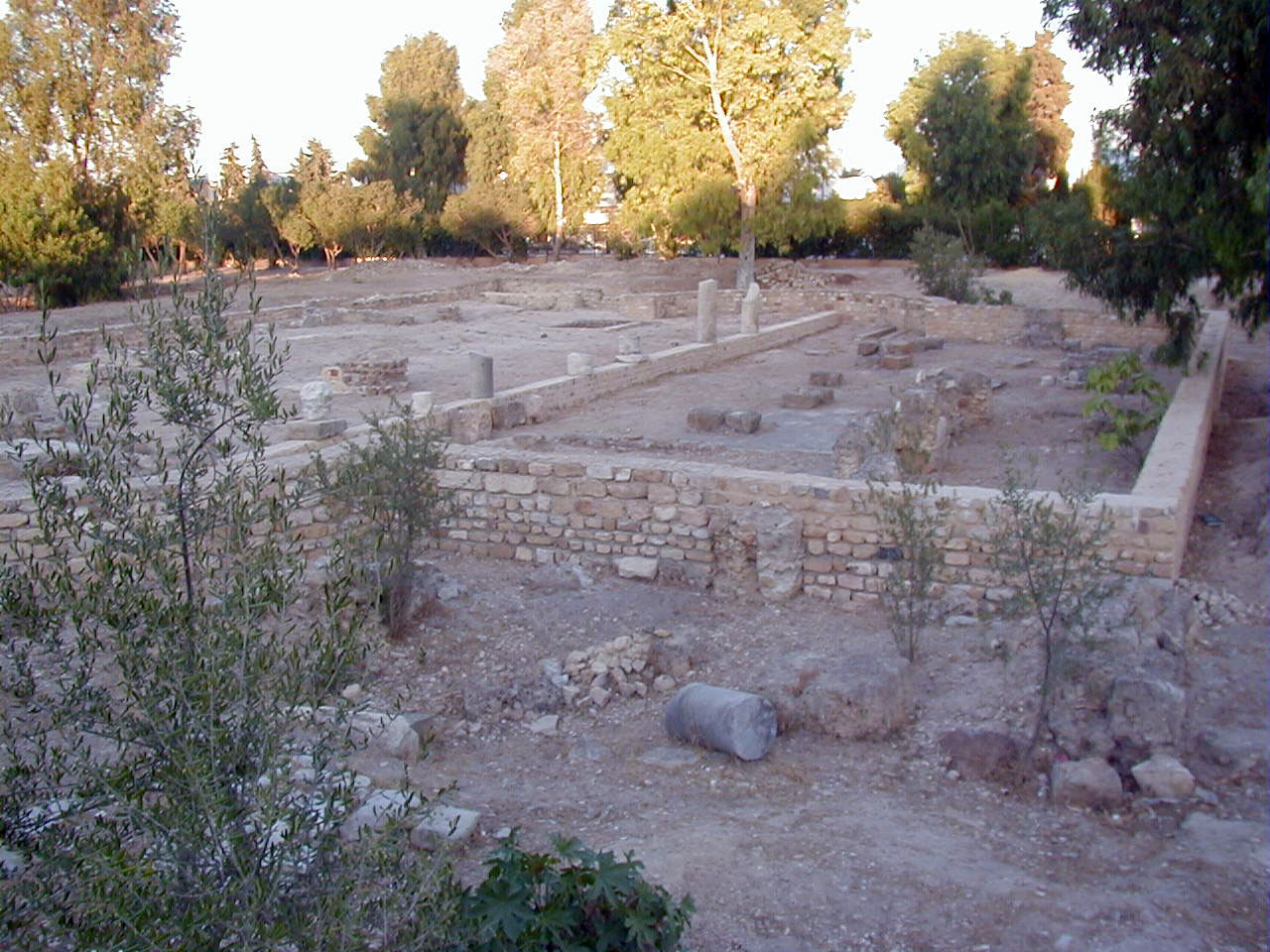The life and practices of early Christians
The early Christians community developed in the decades following the emergence of beliefs about Jesus as the Messiah. This period was marked by efforts to define their practices and theology while navigating their place within both Jewish traditions and the broader Greco-Roman world. This article explores the life, practices, and self-perception of these early communities based on the current state of research.

Early Christian quarter in ancient Carthage. The early Christian community met in informal settings, primarily in private homes, which became known as house churches (Greek: oikos ekklesia). Carthage was a major center of early Christianity in North Africa, with Agrippin being the first named bishop, around 230 CE. Source: Wikimedia Commonsꜛ (license: CC BY-SA 3.0)
Where did they meet, and what did they do there?
Early Christians initially gathered in informal settings, primarily in private homes, which became known as house churches (Greek: oikos ekklesia). These gatherings often took place in the homes of wealthier members who could host larger groups.
Activities in early Christian meetings
- Shared meals: Central to these meetings was the agape meal (love feast), symbolizing unity and mutual care. The practice of sharing bread and wine became a ritual of remembrance and community solidarity, evolving into what later traditions called the Eucharist.
- Scripture reading and interpretation: Members read and discussed Hebrew Scriptures, reinterpreting them in light of their belief in Jesus as the messiah. Letters from figures like Paul and other writings that began to circulate were also read aloud.
- Prayer and hymns: Rooted in Jewish liturgical traditions, prayers and hymns reflected a focus on divine salvation and the role of Jesus as the messiah.
- Teaching and ethical exhortation: Leaders provided guidance on moral living and reinforced emerging Christian ethics, which emphasized love, forgiveness, and humility.
- Charity and support: Meetings often included collections for the poor, widows, and orphans, reflecting the community’s commitment to caring for the marginalized.
In times of persecution, Christians met in secret locations such as catacombs to avoid detection by Roman authorities.
Social structure among early Christians
Communal living and sharing
Early Christian communities often practiced a form of collective sharing to ensure that no member went without basic necessities. This communal ethos is described in Christian writings as a reflection of their ethical and spiritual commitments.
- “All the believers were together and had everything in common. They sold property and possessions to give to anyone who had need.” (Acts 2:44–45)
- The community prioritized care for the vulnerable, such as the poor and widows, which distinguished them from many other religious or philosophical groups.
Leadership and roles
While early Christians communities emphasized equality, roles naturally emerged to provide structure and guidance:
- Leaders and teachers: Figures like Paul, along with elders in local communities, provided theological direction.
- Deacons: Appointed to manage practical needs, such as distributing food and overseeing community welfare.
- Women in leadership: women played significant roles, including hosting gatherings, offering patronage, and in some cases serving as deaconesses or leaders.
Over time, these roles became more formalized, gradually giving rise to hierarchical distinctions within the faith.
How did early Christians perceive themselves?
Early Christians developed a distinct identity shaped by their beliefs, practices, and interactions with the broader world. Key aspects of their self-perception include:
Jewish roots and separation
Initially, Christianss viewed themselves as part of Judaism, interpreting Jesus as the fulfillment of Jewish messianic expectations. They continued to worship in synagogues and follow Jewish traditions. However, as Gentiles joined the movement, tensions arose regarding adherence to Jewish laws such as circumcision and dietary practices. These debates led to significant theological shifts, particularly through Paul’s advocacy for a more inclusive approach.
Identity and distinction
The term “Christian” (Greek: Christianoi) first emerged in Antioch, likely as an external label that was later embraced by the community. As tensions with mainstream Jewish communities increased, particularly after the destruction of the Temple in 70 CE, Christianity gradually defined itself as distinct from Judaism, developing its own scriptures, liturgies, and practices.
Impact of Christian teachings on early life
Christians communities were characterized by a commitment to living out their faith through:
- Charity and inclusivity: Breaking social barriers, they welcomed both Jews and Gentiles, emphasizing equality in salvation.
- Non-violence and forgiveness: Reflected in their responses to persecution, these principles became hallmarks of their identity.
- Hope and resilience: Their belief in divine justice and a coming transformation of the world provided strength during periods of adversity.
Conclusion
The early Christians movement grew from a group rooted in Jewish messianic expectations into a distinct religious identity that emphasized community, ethical living, and hope. Through their gatherings, leadership structures, and theological innovations, early Christians laid the foundations for what would become a global religion. These early practices and self-perceptions not only shaped their own communities but also enabled the broader expansion and institutionalization of Christianity in the centuries to follow.
References and further reading
- Udo Schnelle, Die ersten 100 Jahre des Christentums 30-130 n. Chr. - Die Entstehungsgeschichte einer Weltreligion, 2016, UTB, ISBN: 9783825246068
- Thomas Böhm, Peter Bruns, Wolfram Drews, Michael Durst, Michael Fiedrowicz, Johannes Franzkowiak, Reinhard Meßner, Eckhard Wirbelauer, Gerhard Philipp Wolf, Die Geschichte Des Christentums – Die Zeit des Anfangs (bis 250), 2005, Herder, Ungekürzte Sonderausgabe, Hrsg.: Norbert Brox, Jean-Marie Mayeur, Charles Piétri, Luce Piétri, ISBN: 3-451-29100-2
- Hans-Josef Klauck, Die religiöse Umwelt des Urchristentums, Band 1+2, Kohlhammer, ISBN 9783170103122
















































comments